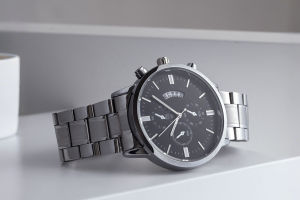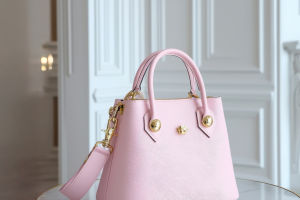Have you noticed how more brands are promoting eco-friendly clothing and more shoppers are talking about sustainable style? It's not just a passing trend — it's a movement shaping the future of fashion.
As we become more aware of fashion's environmental impact, sustainable fashion is evolving from niche to mainstream. The great news is that all of us — whether fashion lovers or casual shoppers — can play a part.
Let's explore why this shift is happening, and how we can embrace it in our daily lives.
Fashion's Environmental Impact
First, we need to understand the problem. According to a 2024 report by the United Nations Environment Programme (UNEP), the fashion industry contributes up to 10% of global carbon emissions and is one of the largest consumers of water worldwide.
- Fast fashion encourages overproduction and overconsumption.
• Many garments are made with synthetic fibers that shed microplastics into oceans.
• Billions of clothing items end up in landfills every year.
• Dyeing processes and chemical treatments pollute water supplies.
As these facts become more widely known, both consumers and brands are being pushed to rethink the way fashion operates.
Growing Consumer Awareness
One of the biggest drivers of change is us — the shoppers.
Recent studies by McKinsey & Company show that nearly 67% of global consumers now consider environmental impact when making fashion purchases.
We've seen this awareness grow especially among younger generations, who:
• Value transparency about how and where products are made.
• Support brands that use sustainable materials.
• Embrace secondhand, vintage, and rental fashion.
• Prefer quality over quantity, building more mindful wardrobes.
Our choices send a clear message to brands — and they are listening.
Brands Are Adapting
In response to consumer demand and regulatory pressure, more brands are investing in sustainable practices:
• Using organic or recycled materials such as organic cotton, TENCEL™, and recycled polyester.
• Adopting circular fashion models, including resale platforms and repair services.
• Improving supply chain transparency, sharing details about factories and worker conditions.
• Reducing packaging waste with reusable or compostable materials.
Even luxury labels are incorporating sustainability, while fast fashion giants are launching eco-conscious collections — though experts remind us to look beyond marketing and seek genuine progress.
Technology and Innovation Are Driving Change
Another exciting force shaping sustainable fashion is technology.
New innovations are helping brands create clothing that is stylish, durable, and eco-friendly:
• Bio-based fibers like mushroom leather and algae-based textiles are reducing reliance on plastics.
• 3D knitting allows for zero-waste garment production.
• Waterless dyeing methods cut water consumption drastically.
• Blockchain technology helps trace garments' origins and verify sustainability claims.
As these technologies become more accessible, sustainable fashion will become even more mainstream.
How We Can Support Sustainable Fashion
So what can we, as everyday shoppers, do to support this shift? Here are some practical steps:
- Buy less, choose well. Focus on timeless, high-quality pieces rather than fast fashion.
- Support ethical brands. Research companies' sustainability efforts before buying.
- Embrace secondhand and rental fashion. Give garments a second life and reduce demand for new production.
- Care for clothes properly. Wash less frequently, at lower temperatures, and air dry to extend garment life.
- Recycle or donate unwanted clothes. Keep clothing out of landfills whenever possible.
Remember, every small choice matters — collectively, they create big impact.
Experts Weigh In
Dr. Kate Fletcher, Professor of Sustainability, Design, and Fashion at the University of the Arts London, says:
"Sustainable fashion isn't about giving up style — it's about redefining it. It invites us to connect more deeply with what we wear and understand the true value of clothing."
Similarly, the Ellen MacArthur Foundation advocates for a circular fashion economy, where garments are designed for durability, reuse, and recycling — helping the industry thrive within planetary boundaries.
Final Thoughts: A Fashionable Future
Sustainable fashion isn't just a trend — it's the future. And it's exciting to see how creativity, innovation, and responsibility are shaping the next chapter of style.
By making mindful choices and supporting brands that align with our values, we can help drive a more positive and sustainable fashion industry — one that looks good, feels good, and does good for the planet.
We'd Love to Hear Your Ideas!
Now, Lykkers — how do you embrace sustainability in your fashion choices? Are there any brands you love for their eco-friendly efforts?
Share your tips and favorite finds with us! Together, let's make fashion a force for good — one outfit at a time. 🌍✨


